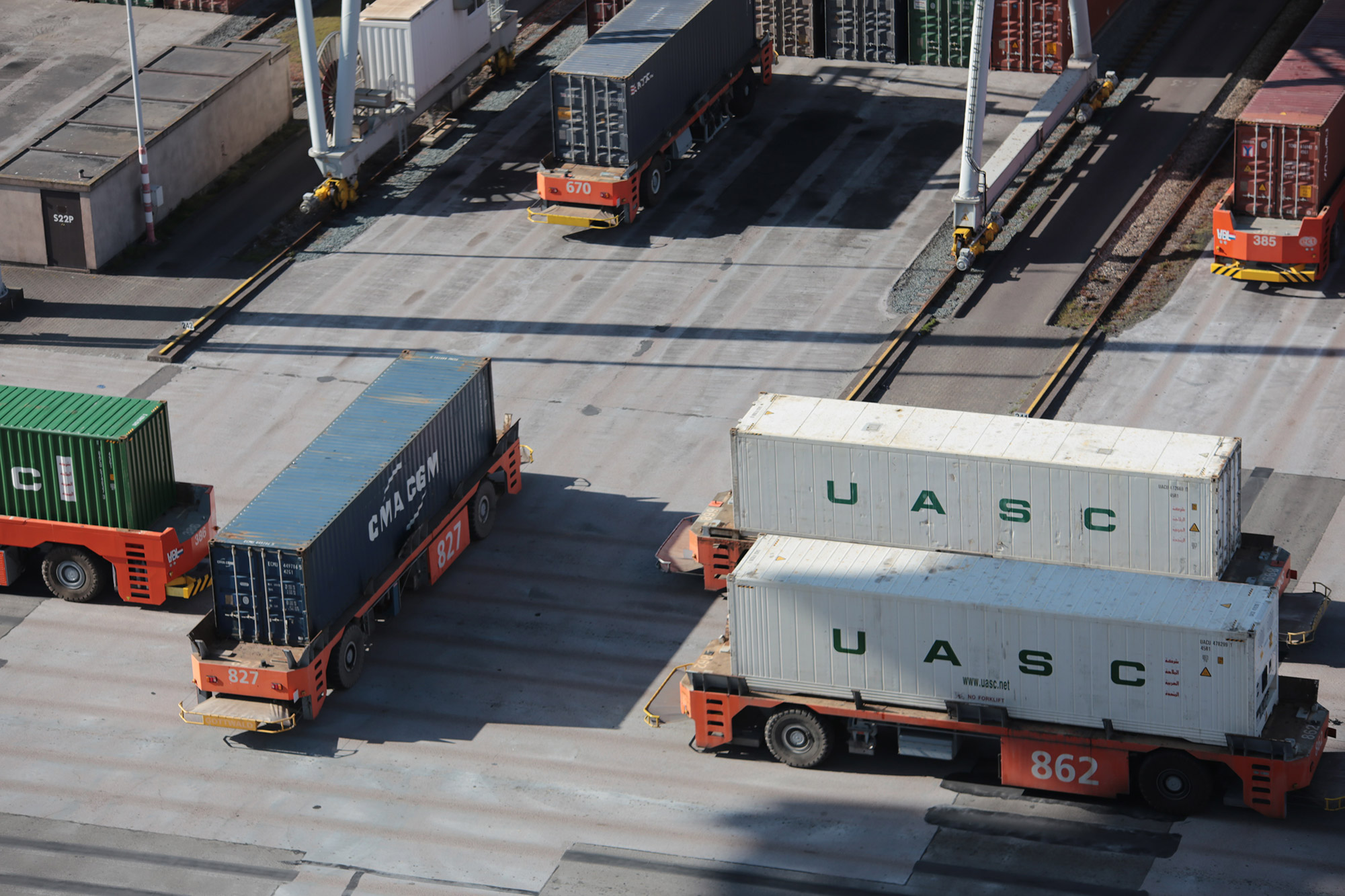
How can collaborative efforts in an industrial area improve resource wisdom?

Freight cooperation solutions for reducing the environmental impact of logistics
freight cooperation, cooperation, fill rate, freight logistics, driving arrangements, ecosystem, optimisation, rationalisation
Operators located in an industrial area can reduce their environmental impact by merging and centralising their freight logistics solutions. This also brings about operational benefits as higher volumes are an advantage in tendering processes, a comprehensive solution means a lighter workload and a joint solution for the industrial area is a more efficient operating model.
- Economy: freight cooperation needs to support climate goals but it also needs to be profitable.
- Commitment: companies need to be committed to their freight cooperation solution, which represents a collaborative economy used for the purposes of purchases.
- Needs: there are synergy benefits but also different needs, and these have to be incorporated into a functioning system.
This solution is right for you if
- you are interested in ways to reduce emissions from your company’s freight logistics;
- your company is located in an area where there are many other companies with similar freight logistics requirements;
- you represent a company focused on freight transport and logistics and want to offer carbon reduction solutions to your customers.
BASIC FACTS
- A freight cooperation system is suitable for companies that are geographically close to each other and have similar needs in terms of freight transport.
- It can be implemented in industrial areas that are in the planning, construction, development or active phase of their life cycle.
- The concept of freight cooperation has been implemented within the framework of futures research. Its practical applications require industrial area- and partner-specific assessment and implementation.
- The concept is implemented by:
- University of Turku, Finland Futures Research Centre (FFRC), Essi Silvonen
- The HNRY project’s transport and logistics solutions forums
- Practical applications have been evaluated in cooperation with Post Nord Oy
Freight transport cooperation challenges the mainstream operating model
In terms of palletised and parcelled goods and parcel traffic, outbound goods are most commonly picked up by transport companies and delivered to the nearest terminal every day. They are then transported to the terminal closest to the destination in the evening and at night, then distributed to their recipients.
Line haul loads tend to have a high fill rate, so they are quite highly optimised in terms of environmental impact and pricing. The collection and distribution of cargo generates more emissions.
There are two ways to enhance carbon neutrality and resource wisdom: 1) by reducing emissions from the fleet; and 2) by optimising operations, which is done by improving the fleet’s utilisation rate and reducing the total mileage. The concept of freight cooperation in an industrial area was developed to challenge the model generally used for transporting goods, in which each company independently invites tenders for its freight transport solutions. The challenge starts by connecting buyers to optimise operations, increase utilisation rates and reduce mileage.
Outbound operations are easy to optimise, but the model needs to be assessed at the system level
The idea for outbound freight is that companies located in an industrial area negotiate a centralised agreement with one transport company, which picks up the goods from all companies in the area in a way that achieves the optimal fill rate. This reduces heavy traffic in the area and has a direct impact on reducing emissions. Companies in the area can also explore the advantages of having a central logistics point/terminal and its suitability for their operations. This allows outbound and inbound freight traffic to be directed to a single destination in the area, and it also reduces lorry traffic. This “first mile” idea is relatively easy to implement, but the situation requires a more comprehensive assessment, both at the industrial area level as well as the district level, so that optimising the operations in one area or of one transport company does not have negative impacts at the system level.
The more challenging aspects of freight cooperation require solutions for their practical implementation
The concept is more complex for incoming freight as various transport companies carry out a large number of deliveries. Transport companies try to combine deliveries but it is difficult in practice due to loading orders, service requirements and schedules. Optimising the system for the transport of outbound and inbound freight may, however, have a significant impact on the mileage, but it requires the development of cooperation between transport companies and service requirements, for example.
Cooperation between transport companies would make it possible for one company to distribute incoming freight to an industrial area if the company selected also picked up the freight from the terminals of the other transport companies. Competition legislation on what information can be shared may also make it more difficult for transport companies to promote this idea. One possible solution would be a separate operator responsible for picking up and distributing goods in the industrial area or a company that specialises in providing climate-friendly transport services.
Freight cooperation solutions have a significant impact on the emissions and attractiveness of an industrial area
The aim of the freight cooperation concept is to save energy/fuel, carry out freight transport operations with the lowest possible mileage and reduce the number of heavy vehicles passing through an industrial area, which makes the area more attractive and safer while reducing noise.
The effectiveness of the concept can be measured by the daily fill rate and mileage of delivery vehicles. It can also be determined how much of the freight that is distributed in fuel-powered vehicles could be transported in electric or human-powered vehicles. The cooperation also allows smaller companies to benefit from larger volumes, giving them a better bargaining position in negotiations with transport companies.
Freight cooperation exploits synergies, or the needs shared by companies, and it is applied to the principles of sharing so that the resource to be shared and optimised is the freight transport capacity; the aim is to maximise the fill load of individual transport vehicles and, consequently, reduce the climate and cost impacts of an individual delivery.
TAKE-HOME MESSAGES
- Trade fair logistics is a good example of a practical application based on this idea: one partner is typically selected to provide all services in an area.
- The development of an operating model based on the idea of freight cooperation can also work in logistics operations in cities and construction sites when the aim is to reduce heavy traffic in urban areas.
- The service promise to the customer is a central theme of the freight transport concept. It will also be necessary to resolve transport companies’ liability issues in the joint procurement model.
- In addition to the industrial area-specific analysis, the situation needs to be assessed locally so the efforts of one industrial area or transport company to optimise its operations does not result in a poorer fill rate or more mileage elsewhere.
Sources:
HNRY – Traffic and logistics solution forum 14 Novermber 2019, expert presentations, materials and workshop materials
Piloting / assessing the suitability of logistical solutions from the viewpoint of a producer, executed by PostNord Kimmo Hyttinen 18 December 2020 and Sonja Heikkilä 14 January 2021
More information: University of Turku, Finland Futures Research Centre, Essi Silvonen, esersi@utu.fi
” We and other transport companies need to gain a genuine understanding and interact with our customers in the development of innovative and sustainable solutions – the industry will turn upside down in the coming years.”
– Kimmo Hyttinen, PostNord 14.11.2019




